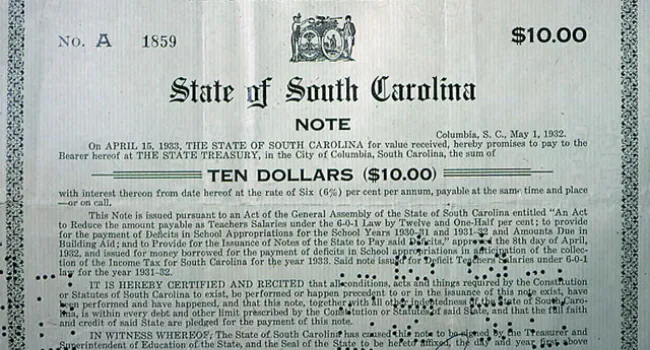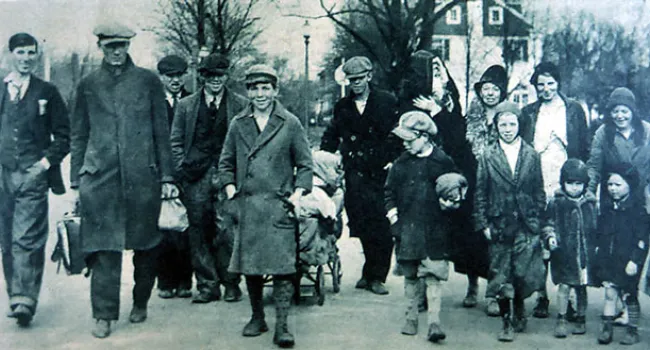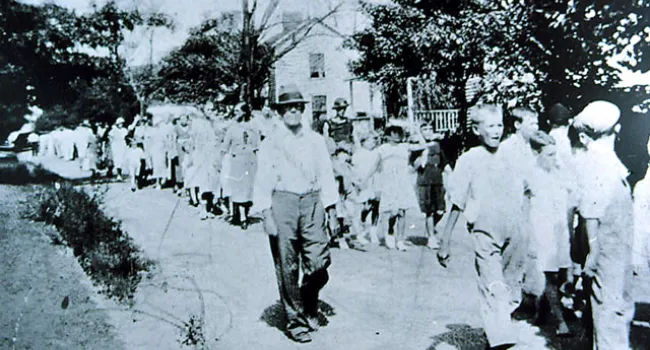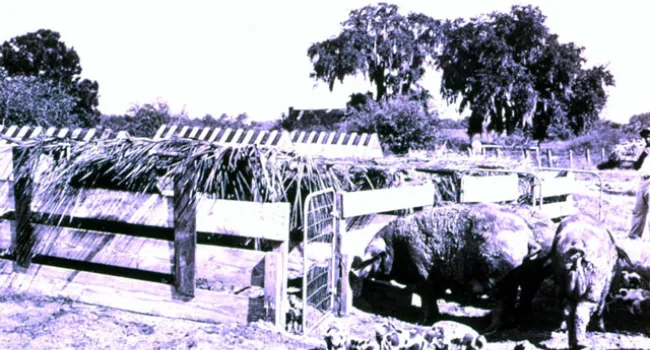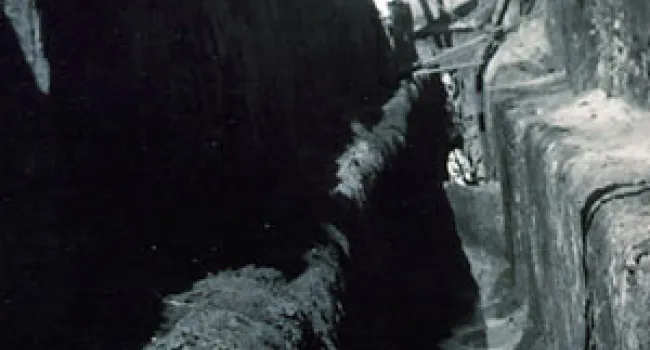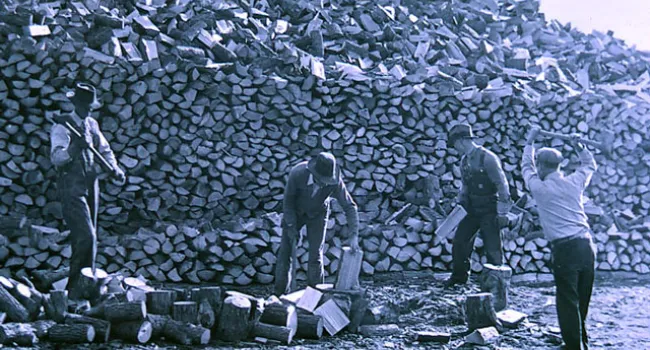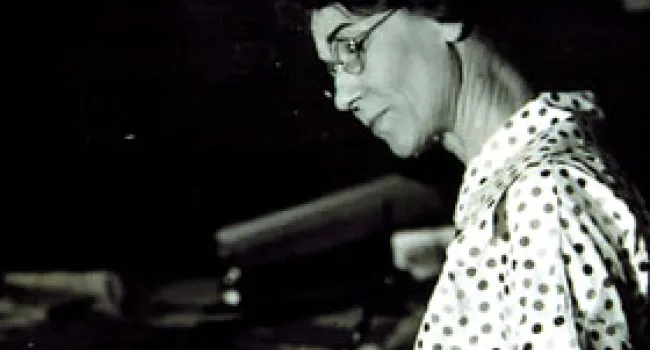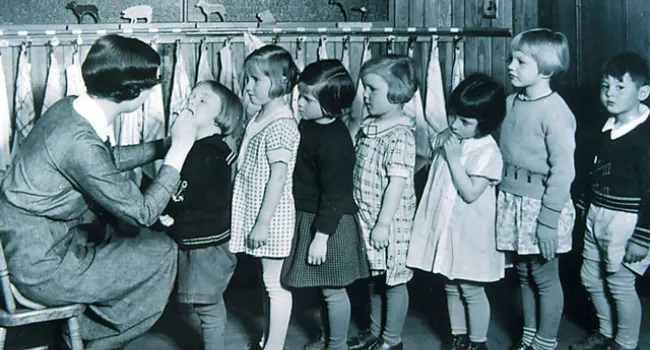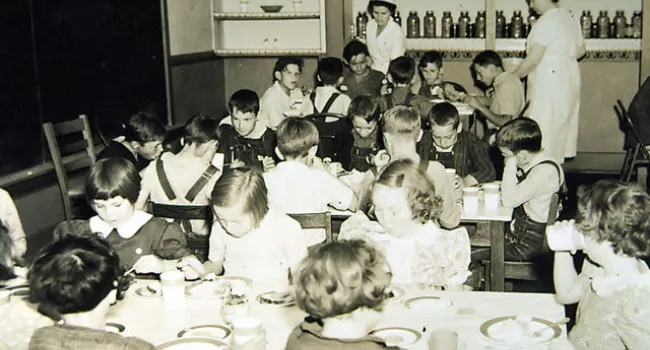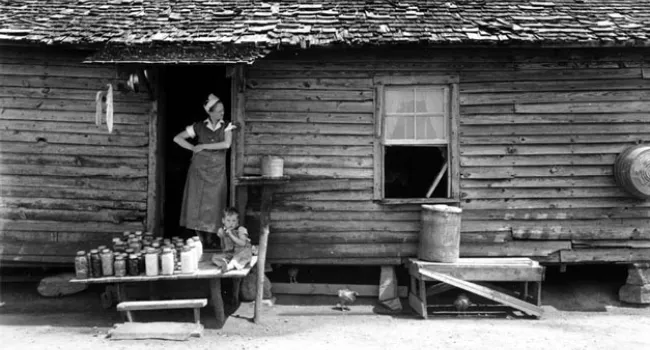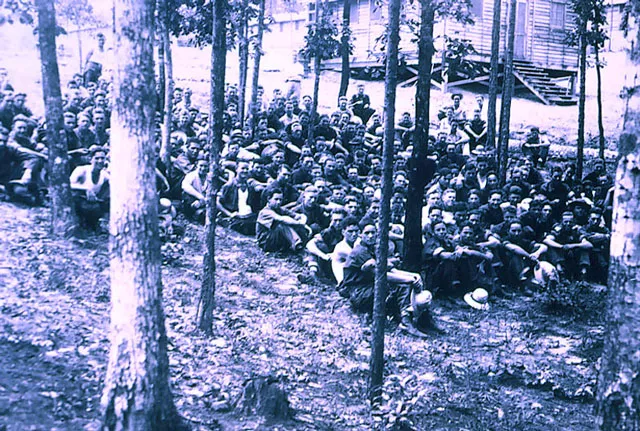
One of the most popular of all the New Deal efforts to provide relief during the depression was the creation of the Civilian Conservation Corps. The CCC was designed to take young men who did not have jobs, place them in camps run with military discipline, and put them to work building public works projects, primarily reforestation and soil conservation. Much of this was done in national and state parks. This had two good effects. It meant that their families were relieved of the costs of feeding and clothing them, and they even received small amounts from their sons' pay to help meet their own expenses. At the same time, many permanent improvements were made to state and national parks. These young men are new enrollees at the CCC camp at Table Rock State Park, and are attending a lecture. CCC workers also built picnic shelters at Edisto Island, a bathhouse at Myrtle Beach, a shelter at Cheraw, and made improvements all over the state of South Carolina.
Courtesy of the South Carolina Department of Archives and History.
Standards
- 5.2.P Summarize how the role of the federal government expanded during the period.
- This indicator was developed to promote inquiry into how wartime government activities, the Progressive Movement, and the New Deal represented an expansion of federal power, including attempts to protect citizens.
- This indicator was designed to promote inquiry into the devastation of the Great Depression and the impact of the New Deal on a largely agricultural South Carolina. This indicator was also designed to foster inquiry into the economic diversification between World War II and the present, to include tourism, global trade and industry, and the maintenance of military bases.
- USHC.4.CE Evaluate significant turning points, including the immediate and long-term causes and effects of the business cycles of capitalism.
- USHC.4.P Summarize the changing role of the government in the economy during the period 1917–1945.
